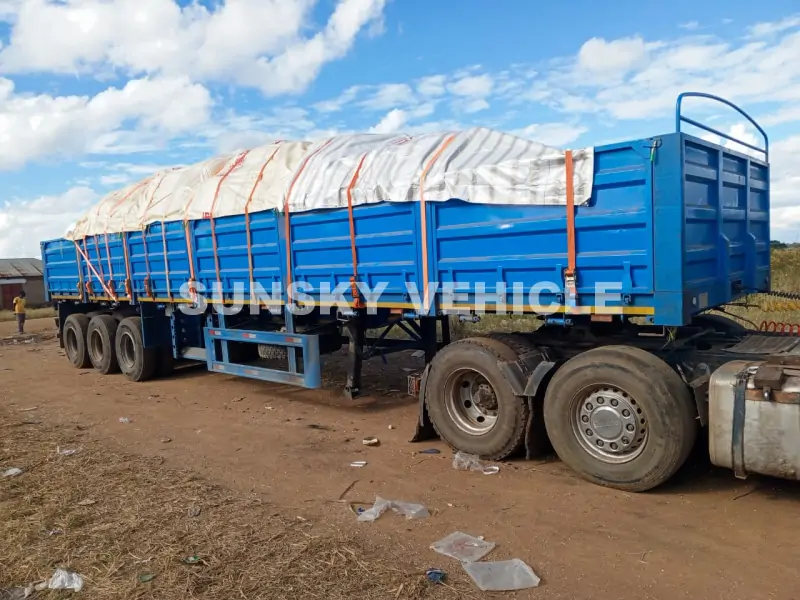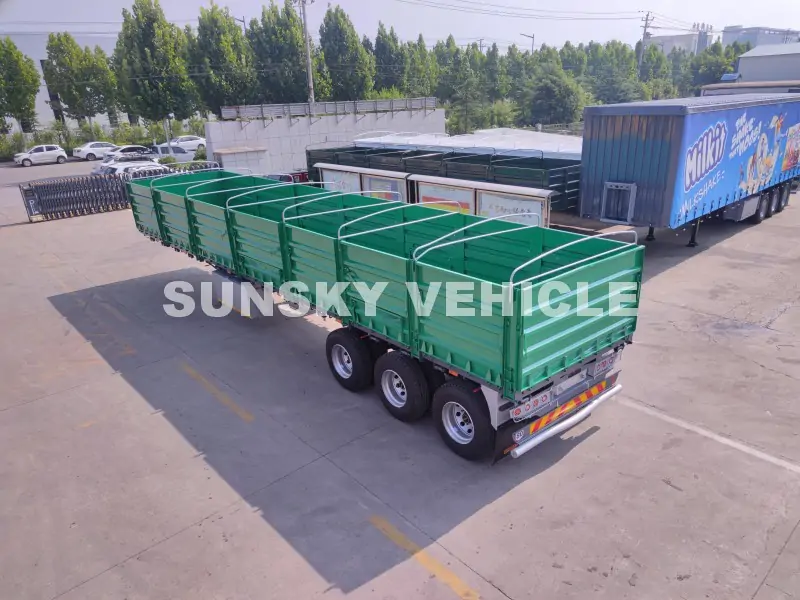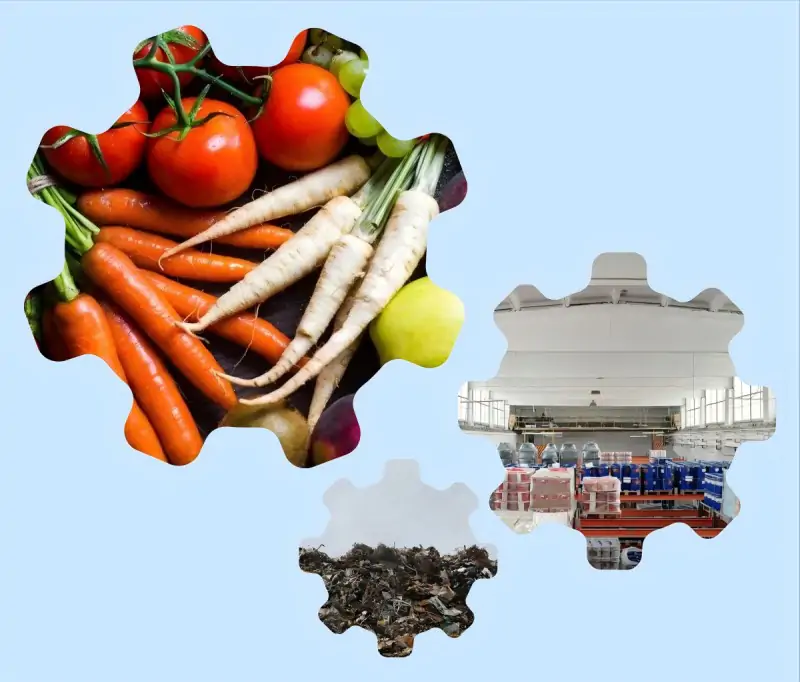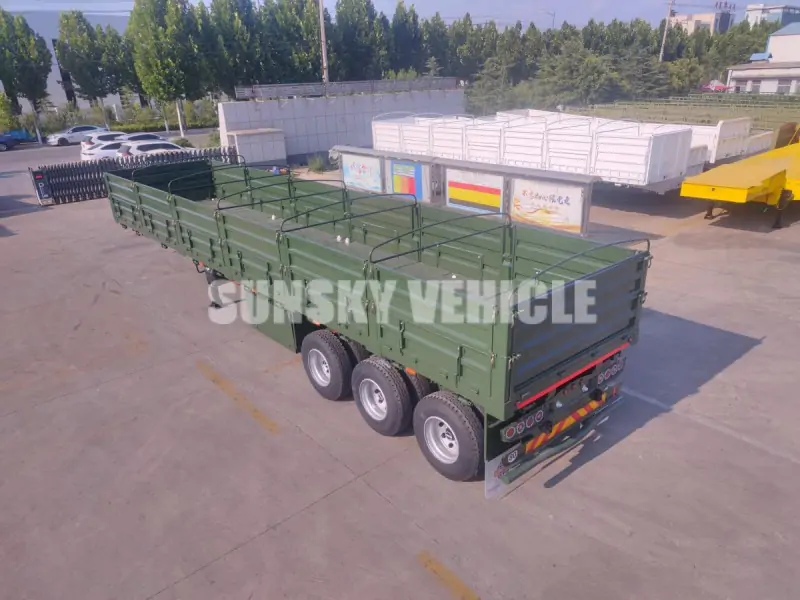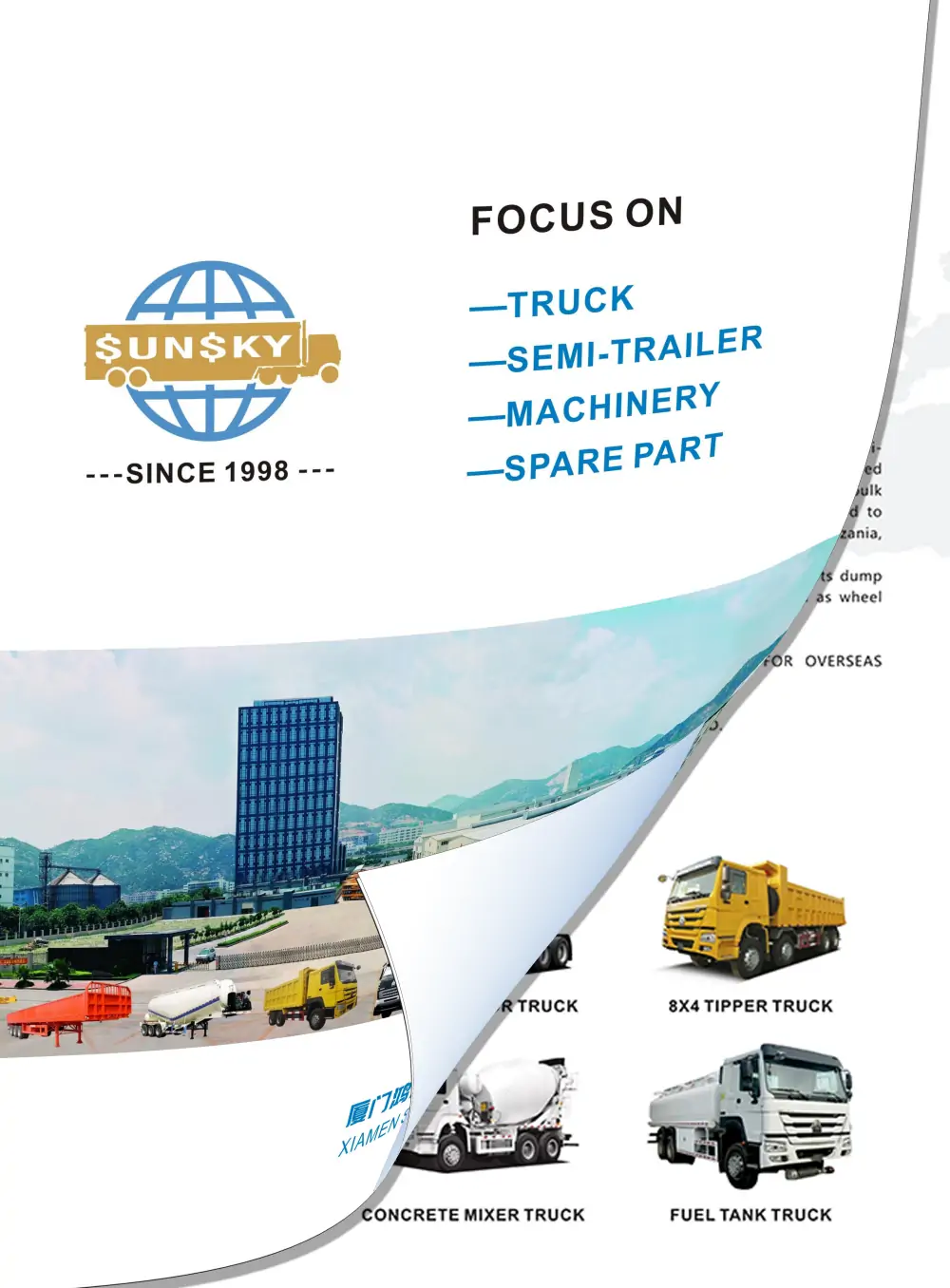Introduction
In the world of transportation, logistics, construction, and agriculture, one thing is constant: cargo comes in all shapes, sizes, and weights. Because of this diversity, a wide range of trailers has been developed to meet different loading, securing, and delivery needs. Among these trailer types, the dropside trailer has become a popular and practical solution—especially for industries that handle mixed, oversized, or irregular loads.
But what exactly is a dropside trailer, and why do businesses choose it over other flatbed or enclosed models?
Many buyers and fleet operators search for equipment that offers both flexibility and efficiency. A dropside trailer addresses these needs by combining open-deck access with side panels that can be lowered or removed. This design allows for easier loading from multiple directions and greater adaptability to different types of cargo.
In this article, we’ll explore everything you need to know about dropside trailers from a practical and technical perspective. You’ll learn about their definition, structural components, key advantages and potential limitations, common use cases across industries, and essential tips for choosing the right model. By the end, you’ll have a full understanding of whether a dropside trailer is the right choice for your business or logistics operation.
What Is a Dropside Trailer?
A dropside trailer is a type of flatbed trailer equipped with side panels that can be lowered, opened, or completely removed. Unlike a standard flatbed that has no side barriers, a dropside trailer features hinged boards—usually made of steel or aluminum—mounted along the edges of the trailer bed. These panels help secure cargo during transport while still allowing fast loading and unloading from the sides.
This hybrid design makes it more versatile than a pure flatbed but less restrictive than an enclosed or box trailer. Cargo that is irregular in shape, bulky, or needs to be accessed by forklift from multiple directions can be handled more easily on a dropside trailer. When the sideboards are raised, they provide edge protection and containment. When lowered, they create open access similar to a traditional flatbed.
In many regions, you’ll see two common terms: “dropside trailer” and “drop side semi-trailer.” Generally, both refer to the same concept—an open-deck trailer with foldable or detachable sides—but the wording may vary depending on the trailer’s size, connection type, or regional usage.
- Dropside trailer: a broader term for trucks or towable trailers.
- Drop side semi-trailer: typically refers to a heavier-duty semi-trailer used in logistics, construction, and long-haul transport.
Key Components of a Dropside Trailer
1. Chassis and Frame Structure
The chassis is the backbone of the trailer and consists of longitudinal and cross beams that distribute weight and provide structural strength.
- Longitudinal beams: run along the length of the trailer.
- Cross members: connect the frame laterally and reinforce the deck.
2. Side Panels / Dropside Walls
These panels act as protective barriers but can be lowered or detached when needed. Options include fixed, fold-down, or fully removable designs. Materials typically include steel, aluminum, or hybrid construction.
3. Hinges, Pins, and Locking Mechanisms
Durable connection systems ensure smooth operation and secure closure, including kingpins, hinges, latch locks, and riveted or welded joints.
4. Landing Gear / Support Legs
Adjustable legs stabilize the trailer when uncoupled and assist with parking or loading.
5. Suspension System
Options include mechanical spring-based, air suspension, leaf spring, or hybrid configurations for load distribution and ride quality.
6. Braking System and Auxiliary Components
Safety relies on air brake systems, ABS/EBS configurations, towing connectors, tie-down points, and hooks for cargo security.
Features, Advantages, and Limitations
Advantages
- Easy and flexible loading/unloading
- Multi-directional access
- Suitable for various cargo types
- Improved operational efficiency
Limitations
- Reduced payload due to sideboard weight
- More complex structure with additional maintenance points
- Maintenance and repair costs
- Aerodynamic drag and safety considerations
Not Suitable When
- Cargo requires full enclosure
- Maximum payload is a priority.
- High-speed long-haul routes demand better aerodynamics
- Loading is always done from the rear
- Strict safety or regulatory requirements favor box trailers
- Low-maintenance fleets prefer fewer moving parts
Use Cases & Industries
Construction Materials and Engineering Equipment
Steel beams, bricks, cement, sandbags, scaffolding, piping, tools, and machinery.
Timber, Steel, and Long-Form Cargo
Lumber, plywood, wooden beams, steel rods, pipes, and prefabricated panels.
Agriculture and Farm Products
Tractors, harvesters, bagged grain, fertilizer, animal feed, fresh produce, and hay bales.
Irregular and Special-Shaped Cargo
Industrial equipment, oversized crates, and custom-fabricated goods.
Urban Delivery, Jobsite, and Rural Transport
Warehouse side loading, construction site deliveries, and rural agricultural transport.
Dropside Trailer vs Flatbed and Other Trailer Types
Dropside vs Flatbed
Dropside: sideboards, better safety, multi-directional access.
Flatbed: lighter, maximum payload, simpler maintenance.
Dropside vs Stake/Fence Trailer
Dropside: foldable/removable sides, versatile.
Stake/Fence: higher fixed sides, better for loose bulk material.
Dropside vs. Enclosed/Box Trailer
Dropside: flexible access, oversized cargo.
Enclosed: weather protection, high security.
| Scenario | Best Option | Reason |
|---|---|---|
| Mixed-size cargo | Dropside Trailer | Side access and containment |
| Maximum payload | Flatbed Trailer | Lighter structure |
| Weather-sensitive goods | Box Trailer | Full coverage |
| Short-distance site delivery | Dropside Trailer | Quick loading/unloading |
| Bulk/loose material | Stake Trailer | Higher fixed sides |
| Long-haul efficiency | Flatbed or Box | Less wind resistance |
Start your project today and get a high-performance semi-trailer solution tailored specifically to your unique needs.Robust and Durable, Achieve Exceptional Transport
How to Choose the Right Dropside Trailer
- Load capacity, trailer length, axles, and material
- Sideboard design: material, height, foldable/removable, hinges
- Suspension, braking, axles, tires, support legs
- Manufacturer, brand, standard vs custom models
- Budget and cost-performance balance
Maintenance Tips
- Inspect sideboard hinges, rivets, and welds
- Maintain suspension and brake system
- Lubricate and apply anti-corrosion treatments
- Seasonal checks: winter ice, rain, mud, debris
Frequently Asked Questions (FAQ)
1. What is the difference between a drop side and a tipper?
Dropsides have foldable/removable sides; tippers have hydraulic lifting for bulk unloading.
2. Can drop side walls be fully removed?
Yes, many models allow full removal, effectively functioning like a flatbed.
3. What size standards are common?
Length: 6–13 meters (20–43 ft), Width: 2.3–2.5 meters (7.5–8.2 ft), Axles: 2–3+.
4. What are the legal/safety regulations?
Comply with local weight limits, sideboard security, brake/lighting systems, and cargo securing rules.
5. What is the cost range?
Small/mid models: $5,000–$10,000; heavy-duty/custom units: $20,000–$30,000+, plus shipping and registration.

